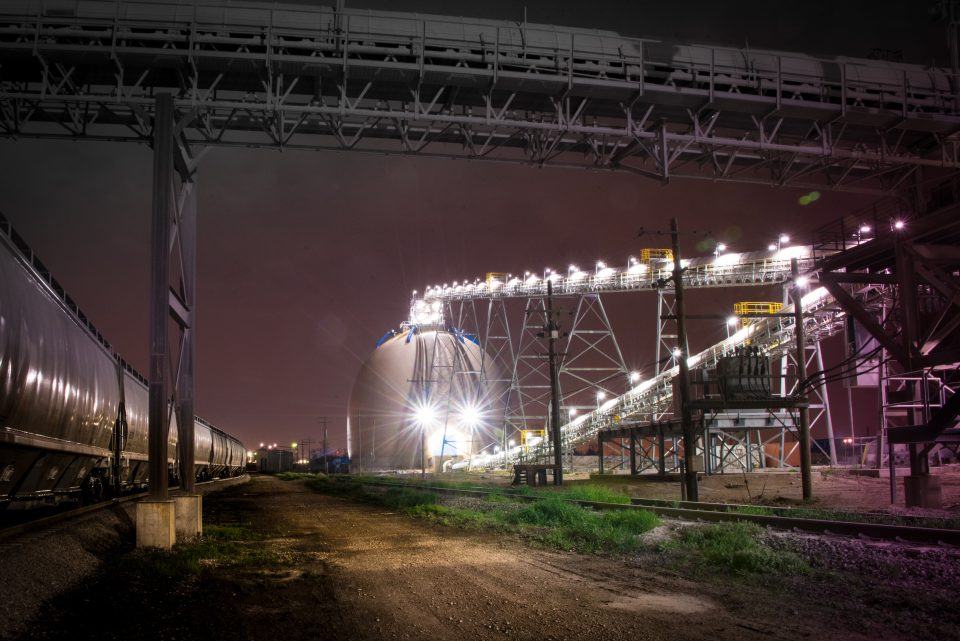For grain companies where construction schedules typically depend on warmer temperatures, there’s another option. A Dome Technology dome can be built any time of year, with work marching right through the calendar.
The industry norm is for new grain-storage projects to wrap up right before harvest. In contrast, a dome can be finished early in the calendar year, providing plenty of time for commissioning before product shows up, said Dome Technology sales manager Heath Harrison. “With a winter-build schedule, it can allow for several months of utilizing the new structure, getting staff used to it, finding the efficiencies, (and) fixing any potential issues before farmers start rolling in from the field,” he said.

Making the most of the off season starts with proper planning in summertime. Dome Technology then completes foundational concrete work before harvest while temps are pleasant. If new storage is being built in an area that is not impacted by the harvest, construction continues until completed, regardless of the weather. But if the site must be sensitive to the harvest, construction crews leave during harvest, then come back and complete the project during the winter.
The all-weather schedule works because a dome is built from the inside out. Once the outer membrane is inflated to create the dome shape, rebar and concrete are applied to the inside; once rigid, construction continues within the structure. Because of this method, “customers hardly know we’re there because the only impact is concrete trucks coming in and out; other than that, all the construction is inside the inflated airform,” or membrane, Harrison said.
Domes have long been built in frigid climates. Some Dome Technology projects have taken place in arctic regions while temperatures were below zero. Robust composition helps the team control the climate inside the structure while work is underway.
The interior is where customization reaches its apex. Aerated systems work well within a dome, and the structure can be fitted with full monitoring systems like temperature cables and gas-monitoring sensors. Fill tubes are always an option, and so are either above- or below-grade tunnels for any size dome.
The no-entry aspect of domes is a critical component in safe operations. No-entry reclaim systems are possible for domes up to 90,000 tons or 3 million bushels, and a bin sweep can be installed in domes as large as 200 feet in diameter. “That’s going to maximize safety and efficiency, especially in this day and age where it’s hard to find labor. Now you’re using one person instead of three to five,” Harrison said.

Also, full automation is always an option, regardless of dome size. Although no-entry systems are capped at 3 million bushels, a dome can be built much larger than that. All domes provide a sealed envelope that protects food-grade products and allows for ultimate flexibility in controlling the interior climate.
By planning a project early and taking full advantage of all 12 months of the year, new construction will be less stressful, less rushed, and better aligned with a company’s exact specifications. “The dome is really fully customizable to the customer’s needs,” Harrison said.
By Rebecca Long Pyper for Dome Technology
Editor’s note: The preceding article was published in the April 2021 issue of Dry Cargo International.